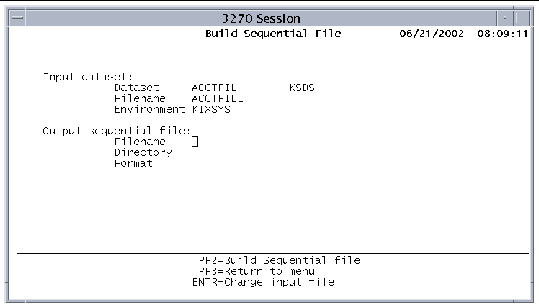
What Are Sequential Files In Cobol
Downloads ending for the Sony Raw Driver and some versions of PlayMemories Home, Action Cam Movie Creator, and MVR Studio. Mac OS X & later; Windows Vista & older. USB Driver for Connection Release Date:. Support by Sony App. Get notifications about the latest firmware updates, product alerts, and more. Download Sony DCR-TRV245E TWAIN 1.0 (Digital Camera / Webcam / Camcorder). In some rare conditionsTWAIN-compatible application software may not work properly after installation of the USB driver from the supplied CD-ROM. This problem may occur with software that has a function to constantly monitor TWAIN devices. Sony driver DCR-TRV245E. Find support information for DCR-TRV245E. Skip to Content. Main menu SONY. My Sony Register your product for software updates and lifetime support or sign up for Sony newsletter. Announcement for customers using PlayMemories Home, Action Cam Movie Creator, MVR Studio and Sony Raw Driver -. Termination of the Map View. Sony dcr-trv245e usb driver for mac. Download the USBDRVEN driver file from the Sony® Support Web site. NOTE: Save this file to the desktop. When the download completes, on the computer desktop, double-click the USBDRVEN icon. In the USB Driver Software window, click the OK button. NOTE: The driver will extract, and create a folder on the computer desktop named Sonyusb.
Here is simple example of sequential file handling in Cobol. The programcreates DIAG.DAT sequential file, writes 3 records, reads them back and displayingoutput on console.
The COBOL source code (CBLVLRC6.cbl) for the program that converts a Record Sequential file formatted with fixed length 80 byte records to a Micro Focus Line Sequential (or ASCII/Text) file with fixed length records with a record size of 80 bytes. Review the COBOL Source Code for this conversion program. Output mode is used to insert records in files. If a sequential file is used and the file is holding some records, then the existing records will be deleted first and then new records will be inserted in the file. It will not happen so in case of an indexed file or a relative file. Extend mode is used to append records in a sequential file. In this mode, records are inserted at the end.
Note: if you run this program multiple times you should remove existing DIAG.DATbefore this program.
Setup
You need COBOL compiler. This project has been tested on
- Microfocus Visual COBOL for Visual Studio Personal Edition 2.2.0
- Microsoft Cobol v 2.20 for DOS
Microfocus COBOL
You can get Microfocus Cobol Personal Edition freely (registration required)from https://www.microfocus.com/product-downloads/vcpe/vcpe22/index.aspx
Note: you don't need Visual Studio (it installs Visual Studio Shell Edition in such case).
Note: I have no luck in Win XP, use Win 7 if you experience install problems.
Microsoft COBOL
There has been 'MICROSOFT COBOL COMPILER' (mscobol.zip) available onhttp://www.ibmmainframes.com/downloads.php (however that site recentlychanged - now registration is required).Use it on your own risk (including licensing risk)!
Note: it will run on MS DOS (including emulation) only - there is no longerDOS support in 64bit Vista/Win7
Ensure that you have MS Cobol in your path. Then use provided compile.bat and run.bat scripts
Compiling this program
In Microfocus Cobol IDE Use:
- Build -> Build Solution
For Microsoft Cobol run provided bat:
Running this program
In Microfocus Cobol IDE Use:
Visualarq 2 crack. VisualARQ 2.5 is now available for download. This new service release includes some new features and fixes most of the issues reported by users: Faster and improved Hidden Line vector drawings.(VisualARQ Object Pipeline component in Grasshopper.; Added new functions for VisualARQ Script API; Added a new component in Grasshopper to create Block definitions.
- Start button on Toolbar
For Microsoft Cobol use provided bat:
##Resources

- very good manual for CPM version of Microsoft Cobol (it is similarto DOS version described in this project)http://bitsavers.informatik.uni-stuttgart.de/pdf/microsoft/cpm/Microsoft_COBOL-80_1978.pdf